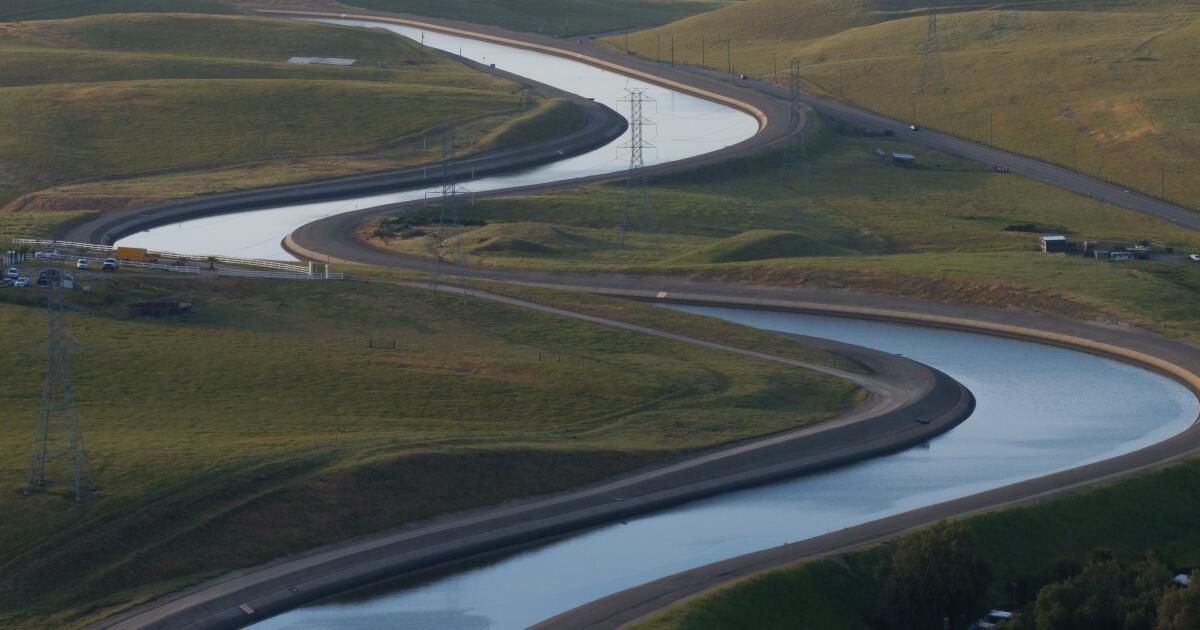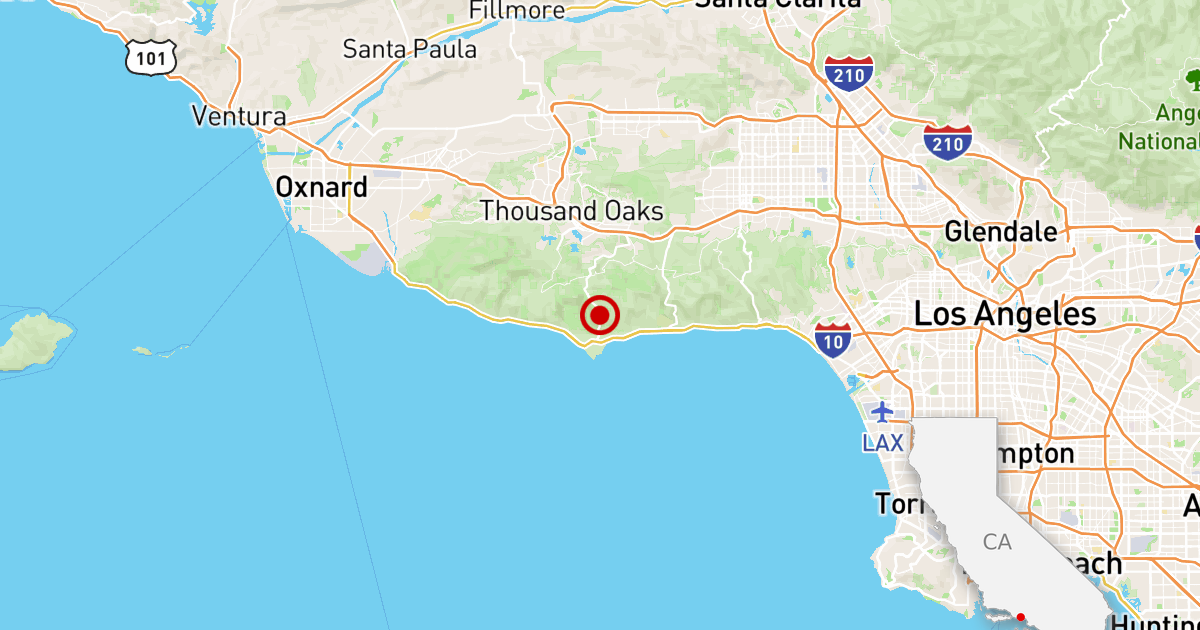After years of deliberation, California water officials have adopted landmark rules that will guide future water use and conservation in the state.
According to officials, the Making conservation a way of life in California The framework will help save 500,000 acre-feet of water annually by 2040 — enough to power more than 1.4 million homes for a year — and will apply to the state’s largest water utilities, not individuals or households.
Under the new rules, about 400 urban water providers will have to meet individualized water consumption targets and conservation goals, among other directives. Some agencies will have to reduce water use by more than 30% over the next 16 years.
The measures are intended to help preserve water supplies as climate change brings warmer, drier conditions. The five-member State Water Resources Control Board voted unanimously Wednesday to adopt the rules, which stem from two 2018 bills that called for the creation of new standards.
“As we think about the Colorado River, the Bay Delta, the stressed watersheds from which much of the urban supply comes to our cities and communities, we need to demonstrate to other states and to ourselves that we are taking steps to alleviate that burden,” Chairman Joaquin Esquivel said during the board meeting. He added that such efforts are needed “especially in dry times, but during all types of water years, to ensure that we all continue to have abundant supply and thriving communities.”
Aggressive and shocking reports on climate change, the environment, health and science.
The framework marks a shift from the one-size-fits-all approach that governed water in California for years, such as the Mandatory 25% reductions in water consumption at the state level The new rules, however, will allow suppliers to weigh local factors such as climate, population and lot size, and take into account previous investments in conservation.
Its approval comes after considerable revisions based on feedback from local water groups, who said the rules would have significant cost implications for some suppliers and customers, and environmental organizations who said, by contrast, the mandate does not go far enough.
“This regulation will be very complicated — it will require a statewide effort to change the way we use water in California,” said Chelsea Haines, regulatory relations manager for the California Association of Water Agencies, which represents about 90 percent of the state’s municipal and agricultural suppliers. “It’s an unprecedented approach and will require significant funding and technical support.”
The industry organization was part of a coalition of groups that said the rules would create undue burdens on low-income and disadvantaged providers. Among other problems, struggling agencies could receive less taxpayer money once the conservation goals take effect. Most of the agencies facing the steepest reductions are in inland areas and places that are below the state’s median household income levels, they said.
The Los Angeles Department of Water and Power, for example, has already made significant progress on conservation and would not need to achieve its first reduction, of 6%, until 2035. Other areas, such as the city of Bakersfield, would need to reduce 25% by 2030 to remain in compliance.
Haines’ concerns echoed a report released by the nonpartisan Legislative Analyst’s Office in January, which criticized an earlier version of the proposal as costly, complicated and unrealistic.
In response to that report and complaints from water agencies, the board decided relax conservation requirementsAmong other changes, the board reduced the number of providers that would have to cut water use by more than 20% and extended the overall timeline for water reductions to 2040, a five-year increase.
“To get this right and do it well, and to achieve all of those long-term goals that we really want as a community, the additional five years that the state water board provided is really important and I think will ultimately help us achieve a better outcome,” Haines said before Wednesday’s vote.
Drafts of the regulation published in May and June had introduced other gradual changes, such as increasing water allowances for existing residential trees as well as planting new climate-adapted trees. Alternative compliance pathways were expanded for certain suppliers facing large reductions, including allowing more time to implement plans to meet long-term targets.
Haines said he appreciated the board's willingness to work with water agencies, but was concerned that the final regulation still might not meet all the needs of some smaller suppliers.
“The state water board made important changes to the regulation to help avoid some of these impacts, or provide more flexibility to water providers, but there are still going to be really significant cost impacts for some water providers in some communities,” he said. “And unfortunately with the budget now“There is no significant financial or technical assistance available.”
But other groups argue the rules are too lax, especially since the state faces a possible 10% decline in water supplies by 2040, according to Gov. Gavin Newsom. Strategy for a warmer and drier future.
“I think it’s a good framework, but I still think we have a lot more opportunities across the state to reduce water use and help prepare our communities for more extremes — more extreme droughts, higher temperatures, all the things we’re already seeing that are only going to get worse,” said Heather Cooley, research director at the Pacific Institute.
The Pacific Institute was part of a coalition of environmental groups that expressed disappointment with the final rule in a letter to the board. The approved rules, they say, are a watered-down version of drafts that set more ambitious goals and stricter timelines for conservation measures.
“While this regulation could have been an important tool to proactively manage the state’s urban water supplies, improve California’s climate resilience, and reduce unnecessary water waste, it instead fell far short of the goals set forth by the California Legislature and Governor Newsom’s Water Supply Strategy,” the letter said.
Before the final framework was approved, critics feared it would leave room for backtracking or that agencies that had been meeting regional goals would fail to meet individual targets set by the state Legislature. They also raised concerns about weakening outdoor landscape efficiency standards and uncapped water allocations for land that could be irrigated in the future.
The combination of those factors results in 390,000 fewer acre-feet of water conserved by 2030 than in previous drafts, according to their analysis. (An acre-foot equals about 326,000 gallons.)
What's more, the final rule means that half of the state's urban water providers, which serve about 72 percent of Californians, won't have to begin reducing water use until 2035 — more than a decade from now.
Cooley said concerns about costs affecting smaller, disadvantaged agencies are valid, but noted that conservation is far less expensive than developing new supplies, particularly since restrictions on groundwater use and cuts to imported supplies from the Colorado River are expected to take effect soon.
“There will be less supply available in the future and we will have to look for alternatives,” he said. “Conservation and efficiency are the most economical alternatives available to us. They are not free… but they are much cheaper than recycled water, desalination and most of the other water supply options we have.”
During Wednesday's meeting, board member Laurel Firestone said she, too, would have liked to see an earlier deadline set for some agencies. She encouraged the board to continue engaging with stakeholders and work to improve reporting and information practices as the rules are implemented.
“I think these standards are achievable,” Firestone said. “But I think the key, no matter what, will be implementation and the learning that we do, particularly in the early years.”
Other provisions of the final rule include directives for water agencies to identify and seek opportunities to update residential landscapes as frequently and as soon as possible, since nearly half of the water applied outdoors in cities is lost to wind, evaporation or runoff.
It also directs staff to consider affordability and equity when implementing the rules, including providing assistance to water providers struggling to meet regulatory obligations and developing strategies to support low-income households.
Suppliers who violate the framework could be subject to action or even fines, but officials said the emphasis will be on progress and compliance. By December 2028, staff must submit a recommendation to the board on whether additional policies or guidelines establishing compliance procedures should be adopted.
Despite some lingering concerns about the final regulation, board members and experts said it's ultimately more important to get to work and begin implementation. The rules are set to take effect Jan. 1, 2025.
“This is not perfect regulation, we can never have perfect regulation, but it is important,” said Esquivel, the board chair. “And it takes us in a direction for the future that we can all be proud of, and that is leading at the national level. We all have a lot to be proud of.”
Times staff writer Ian James contributed to this report.












